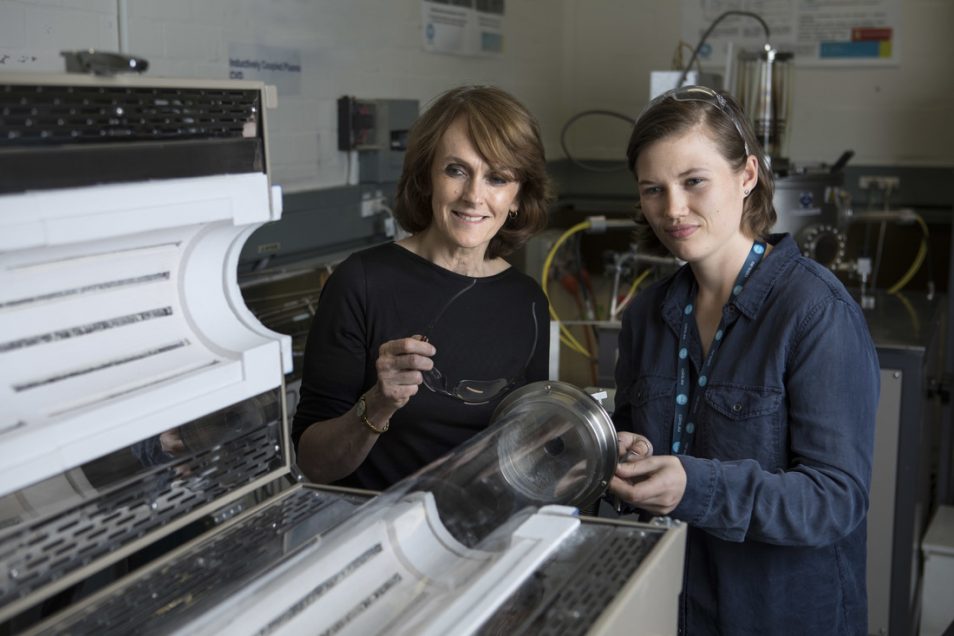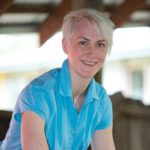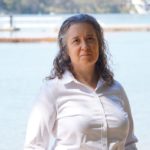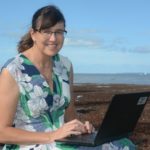
Unlike the women who work in STEM, the stats behind the diversity of the workforce really aren’t inspiring.
Less than one in five senior researchers in Australian universities and research institutes are women. Only one in four IT graduates, and fewer than one in 10 engineering graduates are women. And the really bad news? Women make up only 27 per cent of the STEM workforce. It doesn’t take a genius to realise that’s a problem.
Australia needs to step up its game with getting more women into the science, technology, engineering and maths (STEM) workforce – and as your national science agency, we need to play our part.
Over the last three years we’ve been collecting data and interviewing staff across our organisation to understand the barriers preventing women from succeeding in leadership roles. There’s a lot of big, complex issues that we must try and solve if we are to (a) recruit more women, (b) retain them in the workforce and (c) enable more women to succeed in leadership roles.
It’s time to break the cycle
So how to tackle it and where to begin? Well, while we’ve made some initial headway with our recent Bronze Athena SWAN Award there’s still a long way to go.
We know that it’s not an issue of a lack of talented young girls and women capable of entering the STEM workforce – Australia has them in truckloads.
One clear thing that has emerged from our data is that the ‘pathway to leadership’ for women in STEM is much more unclear than it is for men.
We also know that career barriers pop up much earlier in life for women than when they enter the workforce. Those barriers go back really far – even to childhood – where young girls are growing up with a lack of overall female scientists in the public eye.
If you were ever passed over for Lego Death Star for Christmas and given a Barbie camper van instead, you’ll know that the shortage of women in STEM feeds into much larger issues of gender bias and stereotypes. And if you’re still processing the injustice of the Barbie camper van, I don’t blame you.
One in five media mentions in Australia are from women and the general lack of visibility of female scientists in the public eye is even lower. This kind of imbalance sends a clear signal to girls at a young age that they don’t fit the classic mould of a scientist –in turn young girls lose confidence in their STEM abilities at a young age. When it comes time for young women to choose a discipline at university, it’s no surprise they’re demotivated to choose a STEM career. It’s a self-perpetuating loop.
Superstars, rise up!
Though we’ve come a long way in terms of how we depict scientists in the media (looking at you, sassy lady scientist emoji), it’s still hard to shake the classic trope of a scientist being a man in a lab coat.
That’s where Superstars of STEM comes in. Ever heard the phrase ‘You can’t be what you can’t see’? Science and Technology Australia are behind a program that is setting out to address just that – if we want to inspire more women to get into STEM and leadership roles, then we must increase the number of visible role models in the public sphere.
CSIRO has seven scientists from diverse fields joining the ranks of the Superstars of STEM program in 2018/19. While we’re on the way to smashing through STEM stereotypes, there’s a lot of work to do to dismantle all of the barriers for women in STEM, but we’re heading in the right direction.
In the meantime, let’s get to know your new CSIRO Superstars of STEM – they’re about to set to work sharing their stories with school kids, local and international media, and serving as representatives of their fields of expertise ranging from animal genetics to the effects of marine pollution. I can’t wait to see what they achieve.
Meet our Superstars of STEM
 Sonja Dominik
Sonja Dominik
Research Scientist in animal breeding and genetics.
Sonja works on developing and integrating novel characteristics into breeding programs to maintain efficient and sustainable livestock production.
She works in a regional town in a field that is male-dominated so she is passionate about demonstrating to young people from rural areas, especially women, how they can build a STEM career and remain in their communities. Sonja believes that good female role models and mentors in rural communities are essential to improving the representation of women in STEM.
 Madeline Mitchell
Madeline Mitchell
Postdoctoral Fellow, Agriculture and Food and the Synthetic Biology FSP
Madeline uses plant molecular physiology and biotechnology to develop novel crops for more sustainable agriculture. Her current project aims to enhance the properties of cotton to create biodegradable and renewable alternatives to artificial fibres, including cotton shirts you won’t have to iron.
Madeline already gives talks to high school students and the media, modelling positivity and promoting women in STEM. She wants to increase this public engagement and outreach in her role as a Superstar. She says that while there has definitely been progress in media representations of scientists over the last few decades, there is still plenty of room for broader and more diverse representations of science.
 Cathy Robinson
Cathy Robinson
Principal Research Scientist and Research Director for the Northern Alliance
Cathy’s science sits at the interface between technical and Indigenous-driven science and innovation. The methods she uses enable technical, community and Indigenous experts to build collaborative evidence-based approaches that is used to assess environmental problems.
Cathy says we need more role models to build Indigenous-led and collaborative approaches to build and use the evidence that can weave technical solutions with Indigenous community ideas, knowledge and aspirations.
 Sarah Pearce
Sarah Pearce
Deputy Director, Astronomy and Space Science
Although Sarah started out with a degree in Physics from Oxford, and a PhD in instrumentation for X-ray astronomy, and she currently leads our new space program, her career hasn’t been only in astronomy. She spent several years in the UK civil service, including as a science adviser in parliament.
Sarah works in two of the most inspirational fields of science – astronomy and space – at a critical time in Australia’s involvement in these areas. Sarah has a massive opportunity (and, she feels, responsibility) to inspire and educate. She’d like to build on the high public and media interest in these areas by being a role model for young women and girls looking to enter a STEM career, and to help Australians understand how space science benefits them every day.
 Laura Kuhar
Laura Kuhar
Research Team Leader, Processing Program, Mineral Resources
Laura’s main area of focus is in in-situ recovery, which is like keyhole surgery for mining. Her team’s vision is to move towards a world with invisible mining operations — no expansive open-cut holes in the ground, no tailings dumps and slimes dams, no dust and no dangers posed to underground miners.
The minerals field is often perceived to be slow-moving, unglamorous and less exciting and cutting edge compared with other fields. And despite the estimated consumption of almost 0.5 million kilograms of rocks, metals, and fuels per person per lifetime, there is often a low level of connection between the fundamental importance of mining and minerals to our daily lives. Laura hopes that her participation in the program will giver her the opportunity to serve as a role model and source of encouragement to girls, young women and peers to take up and retain a career in science.
 Sharon Hook
Sharon Hook
Principal Research Scientist studying the impact of pollution on marine organisms
Sharon says we need good information about the environmental benefits and consequences of our actions so we can ensure that our actions are truly sustainable.
She thinks little girls, as well as kids in other minority groups – should be able to visualise themselves as scientists and engineers.
Sharon currently champions change for women in STEM through ‘grass roots’ and network–type support, but thinks that participation in the program will give her a broader network of people to influence and introduce her to new coping strategies.
 Eva Plaganyi-Lloyd
Eva Plaganyi-Lloyd
Principal Research Scientist, Fisheries research
One of the most important aspects of Eva’s work is using mathematics applied to biology and real-life problems. Too often mathematics is seen as something dry and theoretical so Eva would like to share that there are very many career paths that utilise quantitative skills, and that these can be combined with other skills too.
Eva believes it’s important to communicate how scientific research contributes to solving problems and improving life on our planet.


13th December 2018 at 1:41 pm
They are such alarming statistics but it’s not insurmountable to move that dial. At Spark Girlz we’ve taken on the challenge to inspire and encourage female primary school students to look at the variety of options available for them to excel in STEM fields (predominantly electronics and mechanics for us).
We wholeheartedly agree that ‘You can’t be what you can’t see’, and as women we all need to be courageous and step into the light to be the role models that students need.
13th December 2018 at 11:26 am
A two year follow up of these superstar STEM researchers would be excellent Plus new ones coming on board. Thanks, great article.
13th December 2018 at 10:57 am
Congrats to these women. Would love a follow-up article in 2 years, after the program is completed to hear what they thought of it.
13th December 2018 at 10:57 am
Hi,
I think that the issue of women in STEM is an important one. Often women need flexible hours as they have families to take care of and their emphasis on the importance of family means that they might not have as much time to spend within an office or University space.
I think that with the advancements in Digital Technology we might find that more women will get involved in the “virtual business world.” In my experience and in my time big organisations have not been flexible enough for women.
But I am so delighted that this is changing …
Now we can get online and interact with other researchers without sitting in a “research office.” We are still far behind though. There is a vast “space” of women who will not “push” to get to top jobs in STEM because their priorities are often different to that of their male colleagues. But in my opinion they are still very capable and smart.
I, for one, look forward to the day when I can do research and work from my home office space and still be working in a competitive, challenging and stimulating “environment.”
Hello New World!
Dr Sandra L J Johnson.
http://www.child-development.com.au
Director and Developmental Paediatrician
Clinical Associate Professor University of Sydney.
President of the Australasian College of Legal Medicine.
11th December 2018 at 2:31 pm
Photo caption with names and location would be lovely! In this case of course Cathy Foley and, I believe, Madison Moar of UNSW.